Check them out here!
Check them out here!

(2018, back-posting from an old blog)
As a professional graphic designer, my natural instinct is to tell you “hire a designer!” But I know many projects are quick and easy personal initiatives (that neighborhood bar-b-que) or casual business needs (that invitation to the office ugly sweater Christmas party—or is that too 2010?). These don’t necessarily warrant bringing in professional design services, but what I often notice are many nice-sounding events or products, advertised with imagery and text that falls very short of its actual appeal. Don’t let your enriching event, fun get-together or potential hook for a new customer flop unsuccessfully because your collateral is poorly designed.
Consider these fives ways to improve your design strategy:
1. Create hierarchy: everything can’t stand out. Choose what is the most important part of the information you need to communicate and make it obvious at first glance. It’s a crowded visual world out there and you have less than a second to grab scanning eyes and make them stop to read. I often find that clients feel the need to make every part of their collateral “important” and while that may be the case (the RSVP email is just as important as the title), it cannot be visually as prominent. Create a difference in the hierarchy of elements so the eye can rest on ONE thing that catches attention (usually the title or slogan) and may then flow to secondary information.
2. Embrace white space. Beginner designers or those who put on their design hat only when its required of them, often feel the need to fill up every bit of the space allotted. Don’t succumb to that temptation! It is a powerful visual tool to leave some breathing room, a.k.a. negative space, in a layout. This lets the important information stand out, lets the eye move easily around the elements on a page and gives a refined feel overall.
3. Limit font (typeface) choices: a very simple decision that makes all the difference. Pick one display typeface (the big one) and one for the body text (it can even be the same just sized differently!). The more you start combining different typefaces, the gaudier it’s going to look. Within the body text you can italicize or bold certain parts, or even vary the font size, but do that with a consistent typeface. Don’t be afraid to go small either—my clients tell me all the time to “make it bigger because we want it to be readable.” People are willing to read text at quite small sizes, especially if you’ve already grabbed their attention with big, clear headline text. Making body text big will only feel clunky, not more readable.
4. Consider alignment and placement. Try to make text boxes align along an axis or with images, logos, shapes, etc. that are also in the layout. If you put random text boxes all over the layout it will feel confusing to the viewer. Try to place like-things together as well. If you have a logo, try to place your website address near it. If you are including “Register now” then make sure this is immediately followed by a link where people may register. Read: logical (but you’d be surprised at how often people don’t do this!).
5. Choose good imagery. This makes or breaks a design, period. Do not use pixelated images you snapped on your phone in a hurry. Avoid using busy images behind text. If you need to fork over some money for stock imagery, it’s almost always worth it! Or check out the plethora of free stocks sites out there (Unsplash is a favorite of mine). But try to avoid cheese-y stock images that harken back to 1999 PowerPoints. Find something as unique as possible and get creative in how you personalize it.
Happy designing!

(2020, back-posting from old blog; Photo by Drew Beamer on Unsplash)
Tears welled in my eyes this morning as I cleaned the kitchen and peripherally listened to the cartoon my children were watching. The animated car family was celebrating their deceased grandfather’s birthday with a scavenger hunt that led them around to all of his favorite things, and ended with his “treasure,” the two grandchildren. Having just lost my grandmother this month it hit close to home. With three little ones, a newborn included, this has taken me way too long to write, as her life is definitely worth honoring (it’s literally taken me five sittings to write this first paragraph). I have often asked myself how on earth she managed all she did while raising four children. She got a college degree when many women in her generation didn’t even dream of it, then went on to complete a master’s and even got her doctorate. She had a long career in prestigious positions at the University of Arkansas where she had an impact on many lives. I know this from when people we would meet while out and about on a visit to her, from her own stories, and now on the many comments online in response to her obituary.
I loved hearing her recollections from childhood. In our last conversation a few weeks ago on the phone I asked her about some specific things I was curious about in her childhood in light of everything happening now and a book I’m reading. She definitely helped shed some light. Nana was highly interested in genealogy and worked hard to gather as much information as possible on our family lines, all the way to a certain John MacCallum from Scotland who landed in South Carolina in the 1600s. What a treasure for our family to have this information.
She helped define for me what it is to be Southern (and as a southerner way overdue a visit home this gets me even more). I love the South and am so thankful my roots are there. With all of its flaws and mystic beauty. She showed me it can mean being sweet and polite but also intelligent and cultured. Nana traveled extensively in her adult life and I would pour over her photos of Europe when we would go visit and she would tell us all about her recent adventures. These were the pre-internet days so flipping through her real photos of palaces and castles opened a new world for me and forever ignited a wanderlust in me to see those far-flung places. Now here I am writing this from Spain after falling in love with Europe and a Spaniard after trips taken upon her inspiration. She even made it to my wedding in Spain with her husband (they re-married in their golden years). I used to joke in college that my grandmother had more of a hip life than I did as they would go on dates, to concerts and travel all over the place.
Memories are often tied to food, thank goodness because I love food. Too much. I can’t eat peaches and blueberries without it taking me back to eating them on her porch in high summer ever July when we would make the 13 hour trek to Arkansas from Alabama. And I still make her tomato and pesto pie (focaccia bread, pizza-thing…we never really had a name for it, just “Nana’s tomato thing”).
She always said she wanted her ashes to be sprinkled under a magnolia tree on the Mississippi Delta because that’s where she was born and couldn’t imagine anything more southern. I love that image and will always call her to mind when I see a magnolia tree. Lucky me the neighbors have one right outside my window. It is a privilege to honor her life call her my much-beloved grandmother.

(2018), back-posting from an old blog)
Galicia is the northwest outpost in Spain you have probably never heard of (unless you follow my adventures on Instagram). I hadn’t until I arrived here years ago to teach English—although it did come in at number three on Lonely Planet’s “Best of Europe” list for 2017, so it’s garnering attention. As fate would have it, my first year here I met my husband and have recently moved back to this rugged corner of Spain. Galicia, best known for Santiago de Compostela where the Way of Saint James pilgrimage ends, has a way of creeping into your soul with its people and traditions. It is a mystical land laced with folklore and intrigue. It has a long history and layers of complexity: at once modern yet still rooted in traditions. There are traces of its stone age past, remnants of Roman presence, celtic ruins (hence its traditional bagpipe music), medieval monasteries and castles, 19th century urban expansions, and revived contemporary city centers.

Here are the three main reasons it should be next on your destination list:
1. The landscape is breathtaking.
Galicia boasts some of the best beaches in Europe with pristine waters and relatively low development—there are hardly any high rises along the waterfronts. The bays are home to islands that make for a great excursion by ferry. From almost any location in Galicia you always have a view of lush green mountains in the distance—you can explore them on trails galore and rivers around every turn (rivers so clean they bottle the water from them).


2. Its city centers are big enough for fun, but small enough for leisure.
Galician cities almost all have a medieval core, an industrial era expansion and a modern revitalization seen in new concept stores, creative cafés and a street art movement. They are not as bustling as Madrid or Barcelona, which means the slow life is still embraced. Cafés and bars have outdoor seating in the plazas and on the sidewalks—this is the epicenter of social life. Weekend lunch plans often start with an aperitivo and vermouth session in a quaint bar, then actual lunch around 2:00 p.m. of several rounds of plates, and lingering on for hours always ending in dessert, a coffee and gin and tonics. Night life lasts well until dawn for those who can match the Spaniards’ stamina for staying out late. Galicia is also home to a flourishing fashion industry with Inditex’s headquarters (i.e.: Zara, Massimo Dutti, Bershka, Uterque) and other major global brands at the helm (Purificación García, Bimba & Lola, Adolfo Dominguez).


3. The food is delectable.
The star of Galician tables is the parade of seafood pulled from its Atlantic waters—usually cooked without a lot of frills. It is boiled, baked, or grilled with a quality oil, salt and a little bay leaf, then some lemon squeezed on top, letting the flavor of the ocean take precedence. One of the huge perks of the region is that you can eat really well on a low budget. A café con leche (latte) with an elaborate toast will come in around $3.50. There are three main Galician wines: Ribeira, Albariño and Rosal, all from white grapes that pair perfectly with local seafood. Many of the vineyards are open for visiting and there are river boat tours through the canyons that stop at vineyards along the way for tastings.


A trip to Galicia will not disappoint and it is a guaranteed change of pace and scenery from the main tourist sites in Spain. There are plenty of city center hotels or rural houses for renting. It’s easily explored by car, bus or train and still very affordable. Come explore this Atlantic gem and raise a toast to slowing down a bit.
If you'd like more inspiration for your summer travels, check out this article on great European destinations, including Porto, Portugal—only two hours from Vigo!

(2017, back-posting from an old blog)
A friend who was recently visiting asked if we had a farmers’ market around here. My first thought was "no, not really" but then smiled thinking that we do have a "market" though. It's not what we would call back home a “farmers market” (as in, more organic-type produce, more local, more hip, shall we say, with small local businesses boasting well-designed tent set-ups). But we do have a market that just celebrated its 520th year this summer. It is every Monday in the next little town over, and while it’s more of a rural town market than an urban style farmers’ market, it has a great selection of local produce, cheeses, cured meats and liquors. It also has lots of plants, baby clothes, shoes, baskets, books, and various sundries. There are a few cafés that dot the pedestrian street that make a for a great café con leche and toast pause.


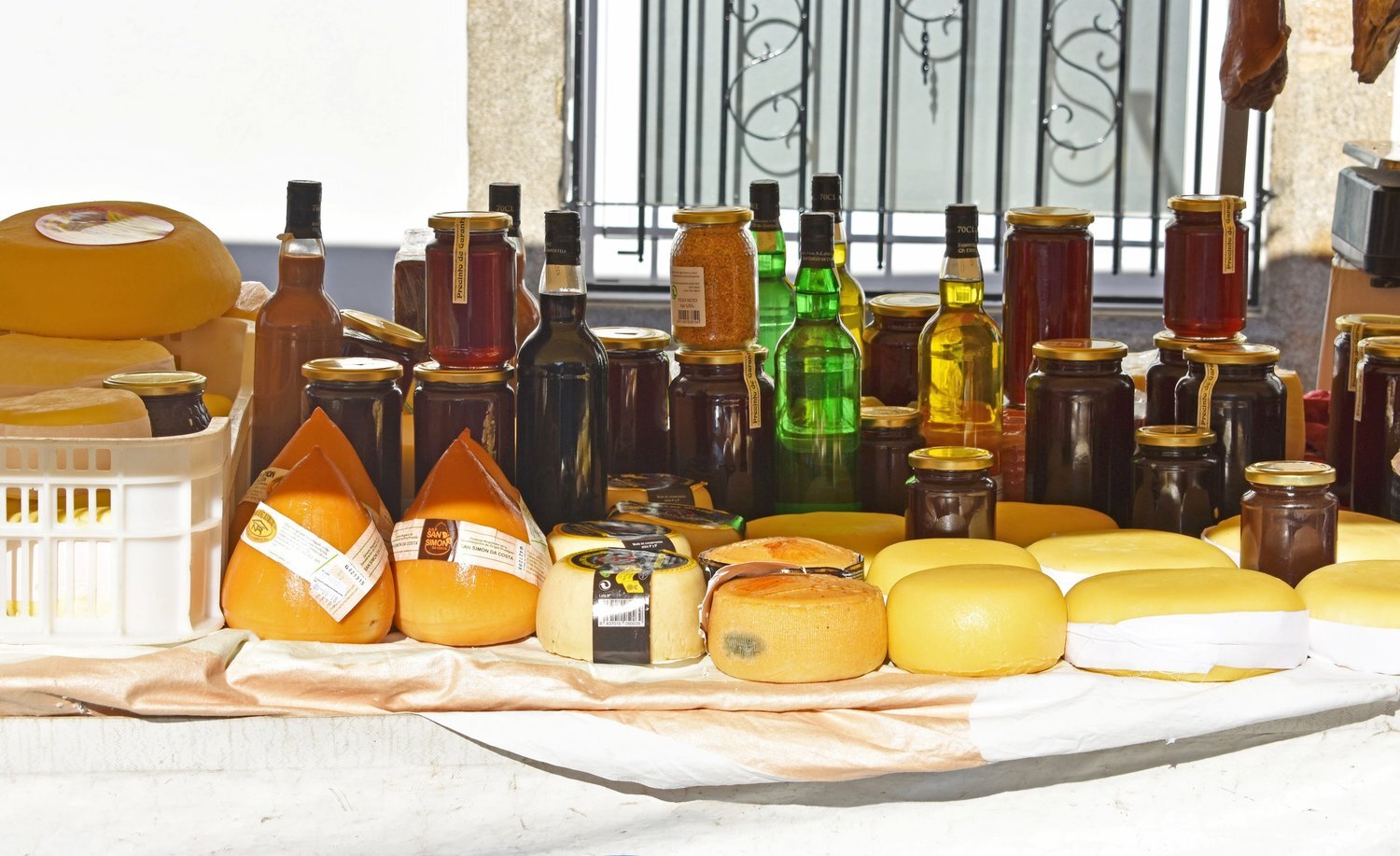

Sabarís, the little town that is home to the market, has a long history dating to prehistoric inhabitants whose flint artifacts have been found in its estuary and date to the Mesolithic period (10,000-4,300 B.C). Later the Celts were established here for quite a while, then the Romans, before the town was officially founded by the Suebi Germanic tribe in 573 and later conquered by the Visigoths.
When the Romans arrived, the town was already dedicated to its patron Saint Cristina (as in the 300s). This church is actually a newly built parish church on the site of the older ones. It only dates to the 1920s (although things always seem to feel more ancient than they really are in Galicia since they are usually made of stone and are covered in moss).

The old bridge that connects Ramallosa to Sabarís is pre-romanic, but was later destroyed and rebuilt in the eighth century. The story goes that in the 1200s San Telmo ordered the reconstruction of the bridge and after his death miraculous protected it in a bad storm. People still leave flowers and candles to this day asking for prayers. Sabarís and this bridge lie along the Portuguese Way of the Camino de Santiago por la Costa.


All dates/facts from Wikipedia.
(2017, back-posting from an old blog)

“What we want out of a vacation changes as we age. It changes from vacation to vacation. There was a time when it was all about culture for me. My idea of a real break was to stay in museums until my legs ached and then go stand in line to get tickets for an opera or a play. Later I became a disciple of relaxation and looked for words like beach and massage when making my plans. I found those little paper umbrellas that balanced on the side of rum drinks to be deeply charming then. Now I strive for transcendent invisibility and the chance to accomplish the things I can’t get done at home. But as I pack up my room at the Hotel Bel-Air, I think the best vacation is the one that relieves me of my own life for a while and then makes me long for it again.”
— Ann Patchett, “Do Not Disturb,” in This Is the Story of a Happy Marriage
When I read this quote by Ann Patchett I could totally relate, although I could have years of changes in preferences ahead of me. When I was in my early twenties studying abroad or teaching English in Spain, I could push through travel fatigue to wait in crazy long lines for museums and tourist sites, could eat at whatever dives we found just to eat “local” but cheap, stay in eight-dollar-a-night hostels, reveled in whatever I could find that was a cultural site, historically important place, something reflective of local life. While I still love culture, history and travel, living abroad does mean that those things become a part of daily life and what you wish for in a vacation takes on a whole new meaning. But maybe even more than that, having kids changes what you need in a vacation.
Since our families live so far away our vacation time is spent visiting them. So in terms of our actual “vacations” it looks more like weekends away. Sometimes with our kiddo, sometimes just the two of us. This past month we escaped for one night to rural northern Portugal, just an hour’s drive away but it felt like the total disconnection we needed. Sometimes you just need to hit the reset button. We adore our little one and so deeply thankful for family life, but time alone as a couple and time to relax a moment away from dishes and laundry, the computer and errands, even if just a day/night, can do wonders for a taxed mommy/daddy-brain (and body!). The handful of times we’ve been near grandparents and able to escape usually means walking into the hotel room and collapsing on the bed cherishing silence and lack of responsibility, and my whole body literally unwinding in a moment of relaxation. Getting to read a book, write, or just sleep feels like heaven. And pool time is always a plus.
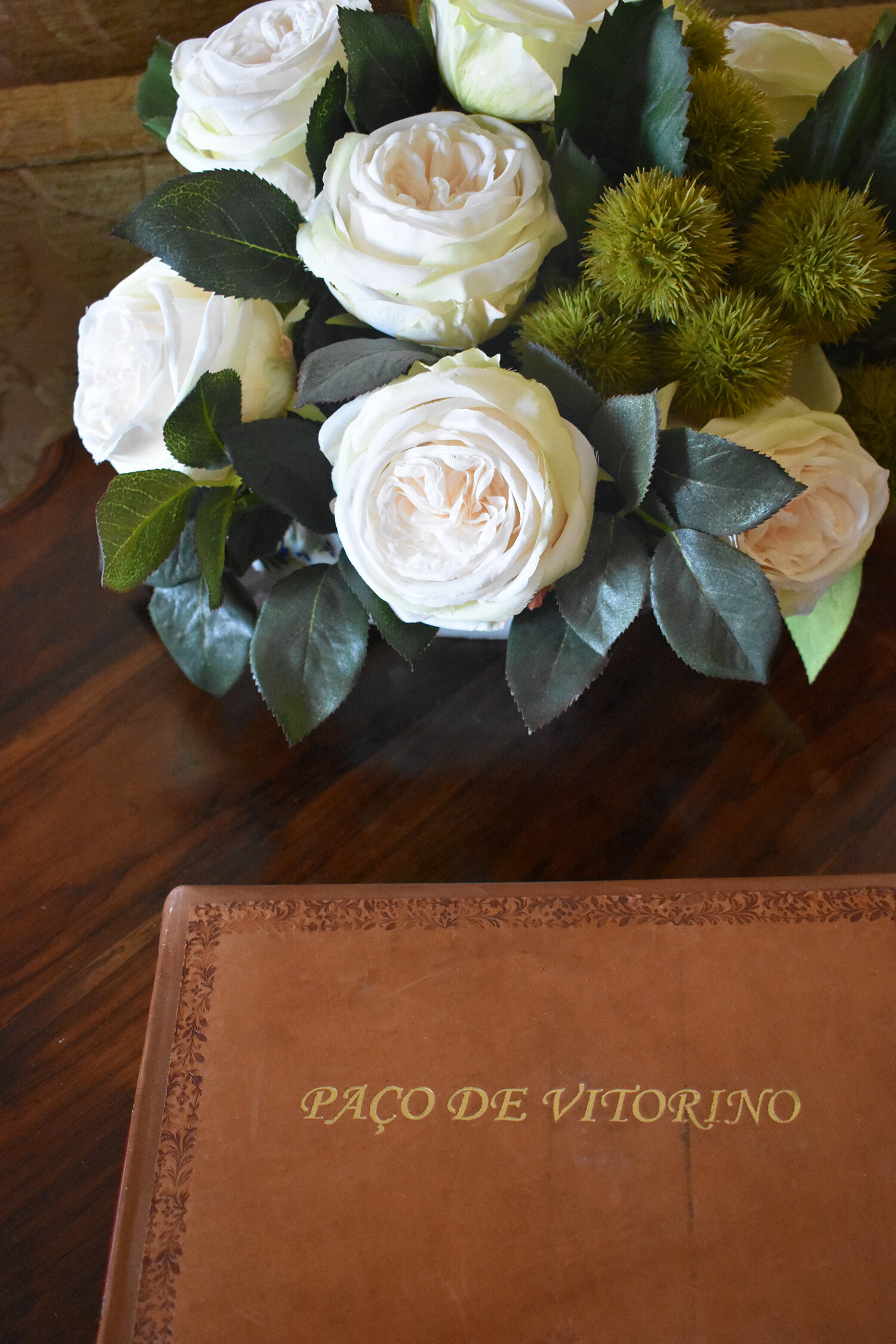



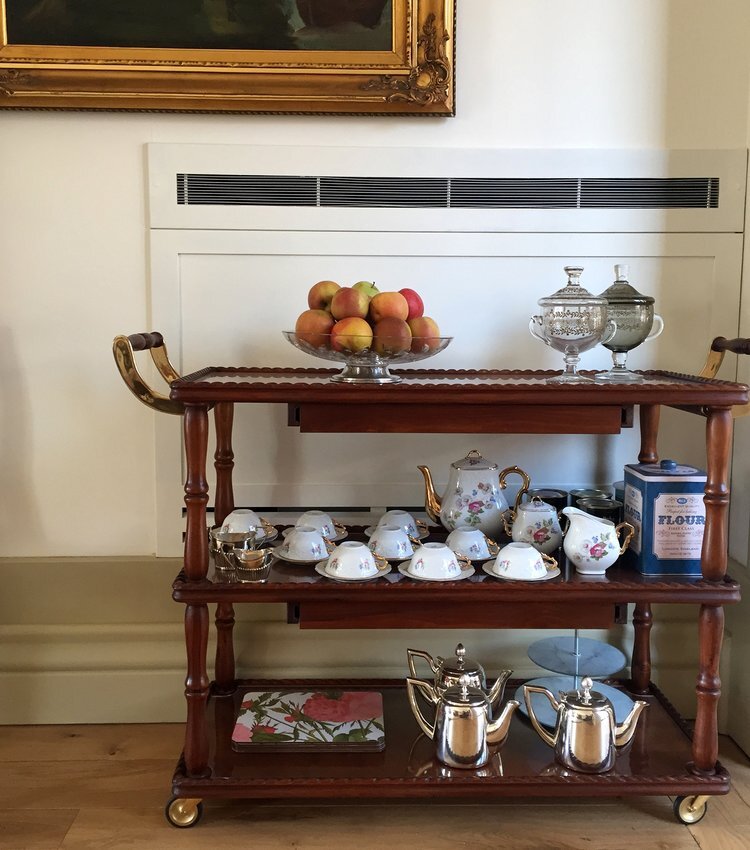

For this weekend away we went to Paço de Vitorino at the recommendation of a friend. Portugal is full of paços and pousadas that you wonder how on earth there are so many treasures tucked away in every little corner. Portugal is also still fairly economical so it’s quite do-able to plan a nice trip without spending a fortune. This one was an old monastery that was renovated a year ago into a quaint 14-room bed and breakfast, totally secluded from anything near it, next to a river, hardly even marked by signage. The peace and tranquility is incredible. It has maintained its rustic feel but been restored to stately elegance. The pool looks out over a rugged valley and cozy living rooms look just right for curling up with a book in colder months. Breakfast was a dainty affair, all the details just right. It is a short drive to Ponte de Lima for a dinner in an idyllic old village. We strolled along the river bank with the locals out for the Saturday night promenade with families and friends. The main plazas had their facades all lit up with non-corny strands of lights. We stumbled upon a 9:30 p.m. Mass in a church in the city center from the 1200s. Sunday morning we stopped for a second coffee on the river (that I spilled all over myself and the cafe owner helped wipe me down with a wet cloth). And then back home, refreshed and with a renewed thankfulness for all the blessings we can take for granted in daily life.

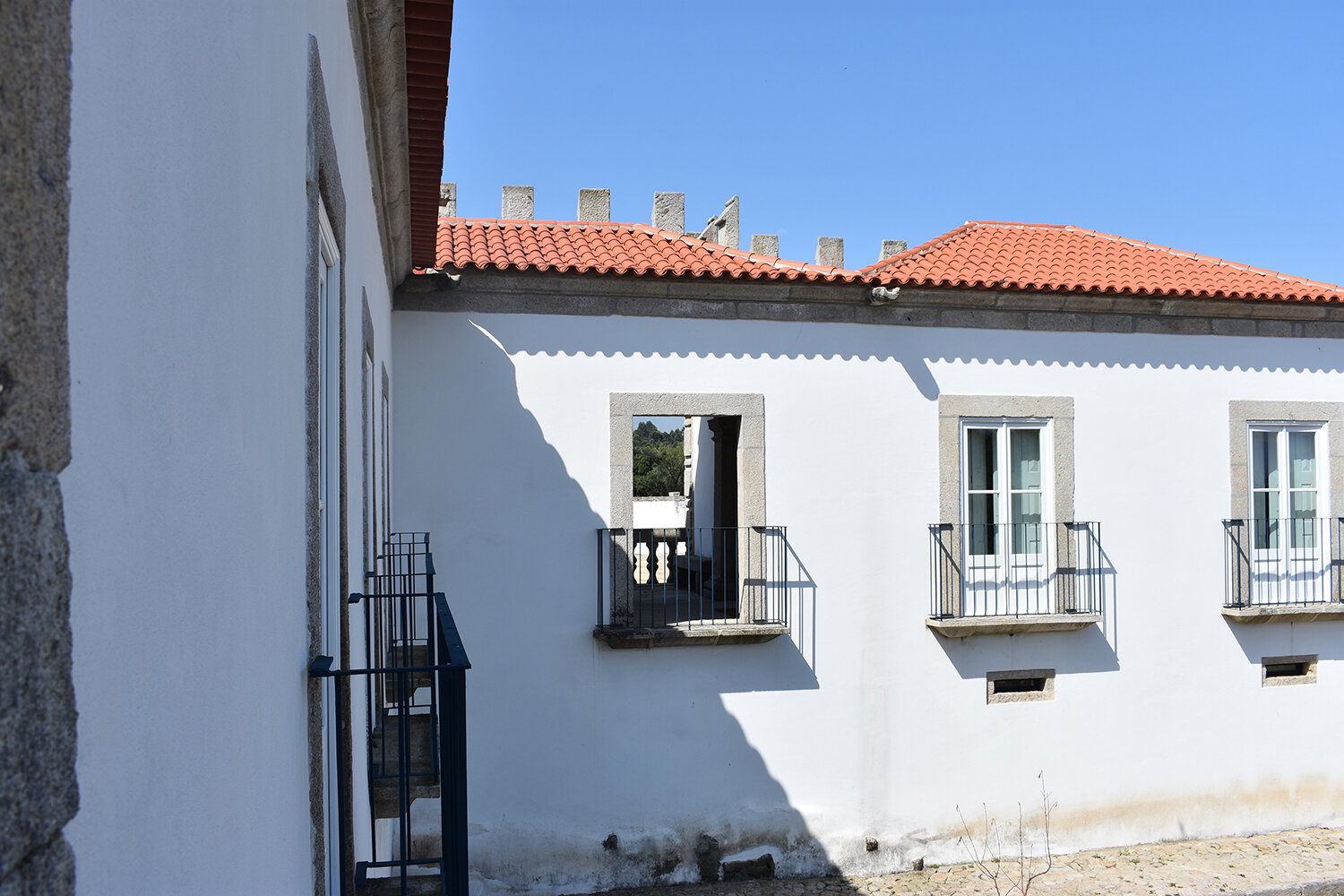





(2017, back-posting from an old blog)
In January we decided to take one last trip to an onsen before packing up in Japan. When first introduced to onsen (thermal baths with water that seeps up from volcanic rock) I was a bit un-appetized by the thought of having to be in my birthday suite with strangers (most do have women-only/men-only baths, whew…). I passed up the opportunity a few times until I couldn’t resist how relaxing it looked to be among trees, mountains and total silence while soaking in warm waters. I’m a convert. We also later visited a few others that are private which is even more relaxing to be there alone.
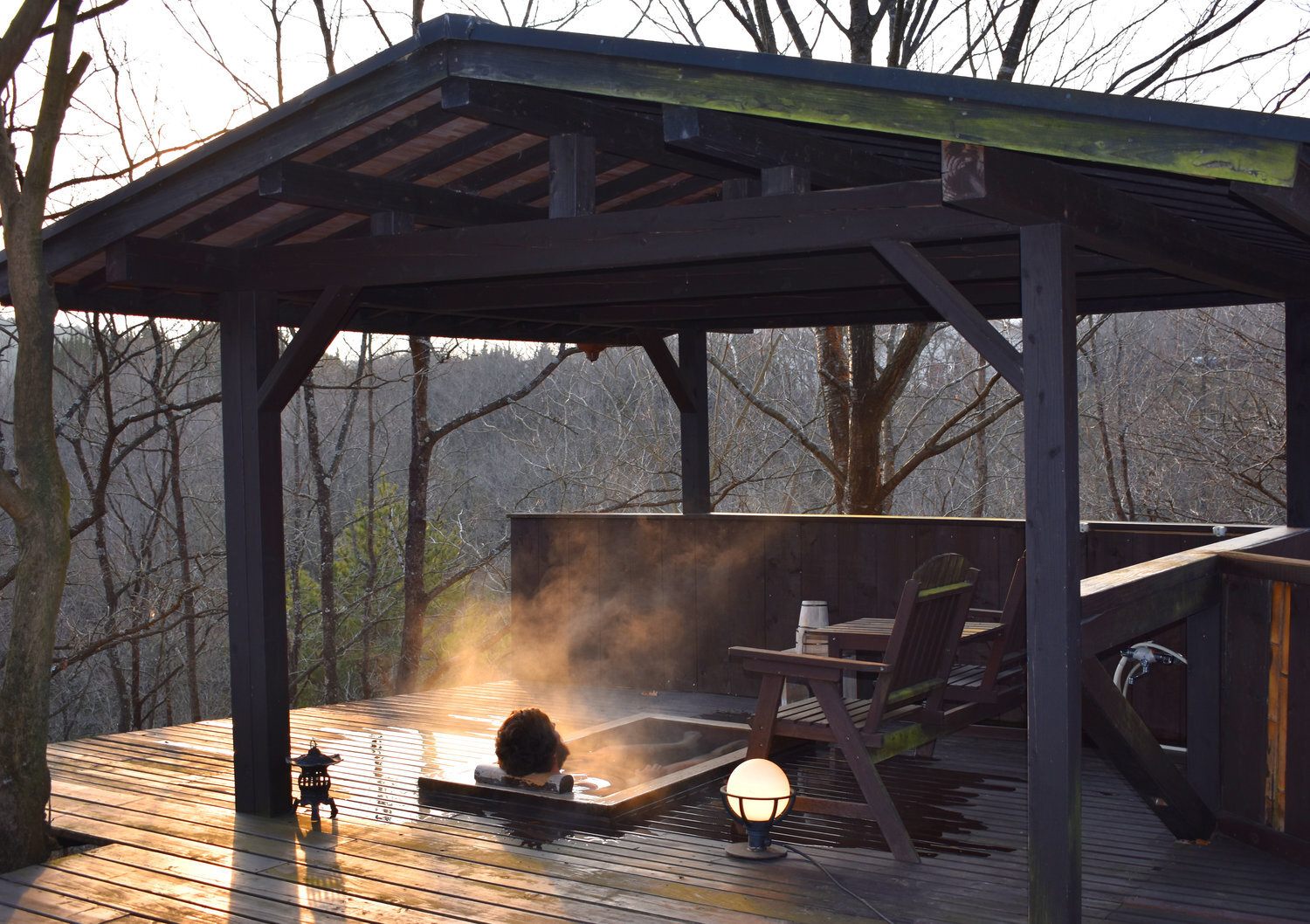
My thoughtful husband planned a side trip on the way to pass through a famous pottery village, Koishiwara, so we could take home some keepsakes from Japan and always relish memories when we use them. It was pottery heaven perusing store after store of wares. And even better, it was all covered in snow with winter-wonderland-y charm.



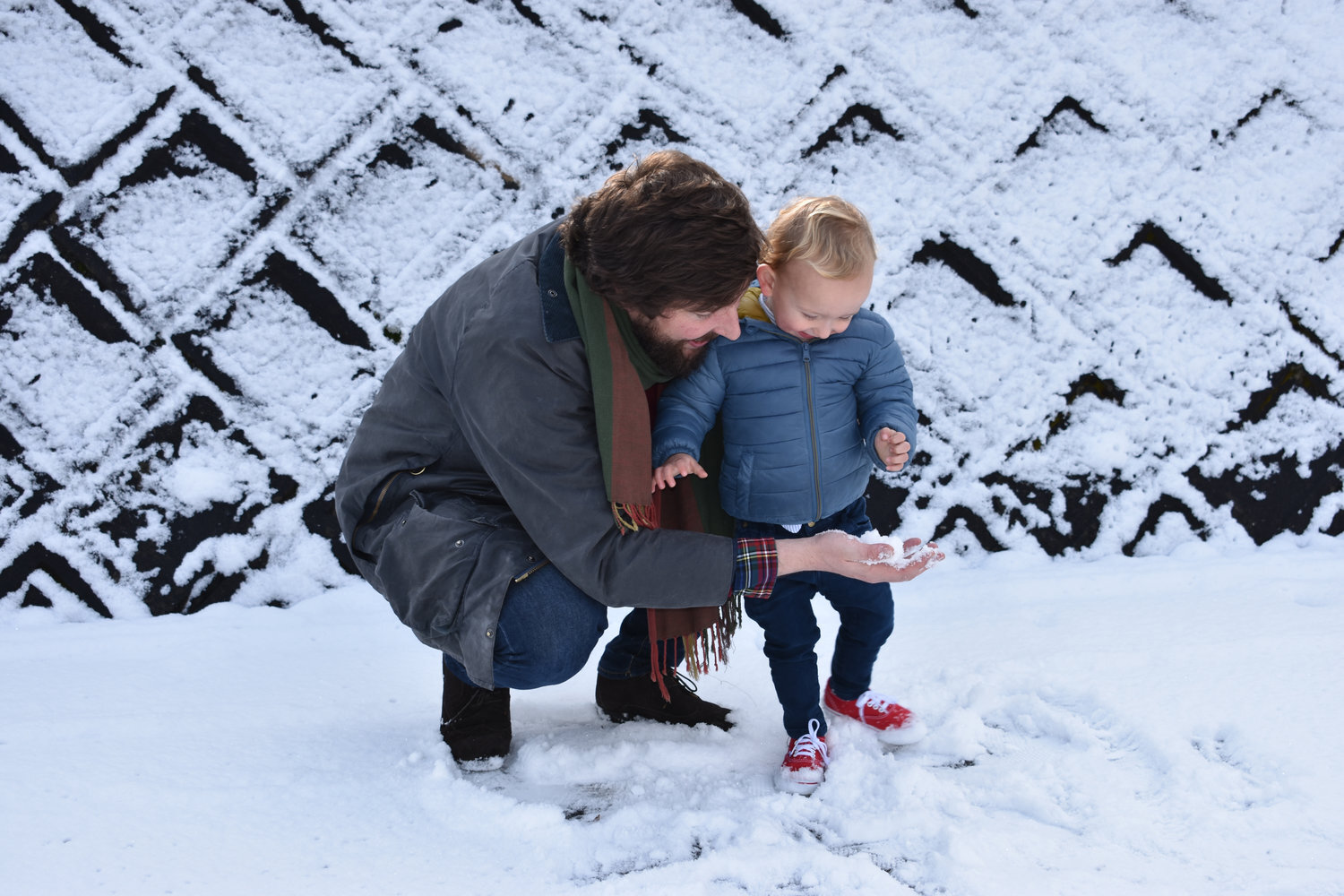
We couldn’t have picked a dreamier ryokan (traditional onsen hotel). It was tucked away in the mountains of Oita, and when we arrived the smell of smoke from the fireplace was swirling out from the entrance chimney. Everything was made of wood and had a natural, rustic heartiness to it. The winter stillness gave it a mystical peacefulness that clung in the air. As you walk from the room to the baths, to the dining room, all you hear is a bit a trickling water. The Japanese are masters of peace (peaceful environments and public peace, that is; I would argue that many have inner turmoil where the peace from their public face flees and the real anxious feelings of private feelings arise). Our chalet had a private bath on the porch that overhung a river below. The rooms inside were warm with Japanese style heating techniques—which I have to say were a bit hard to live with most of the time, but it seemed fitting there to have the heated table and thick blanket over it to cozy-up under. It was like a deep breath before the chaos of moving.




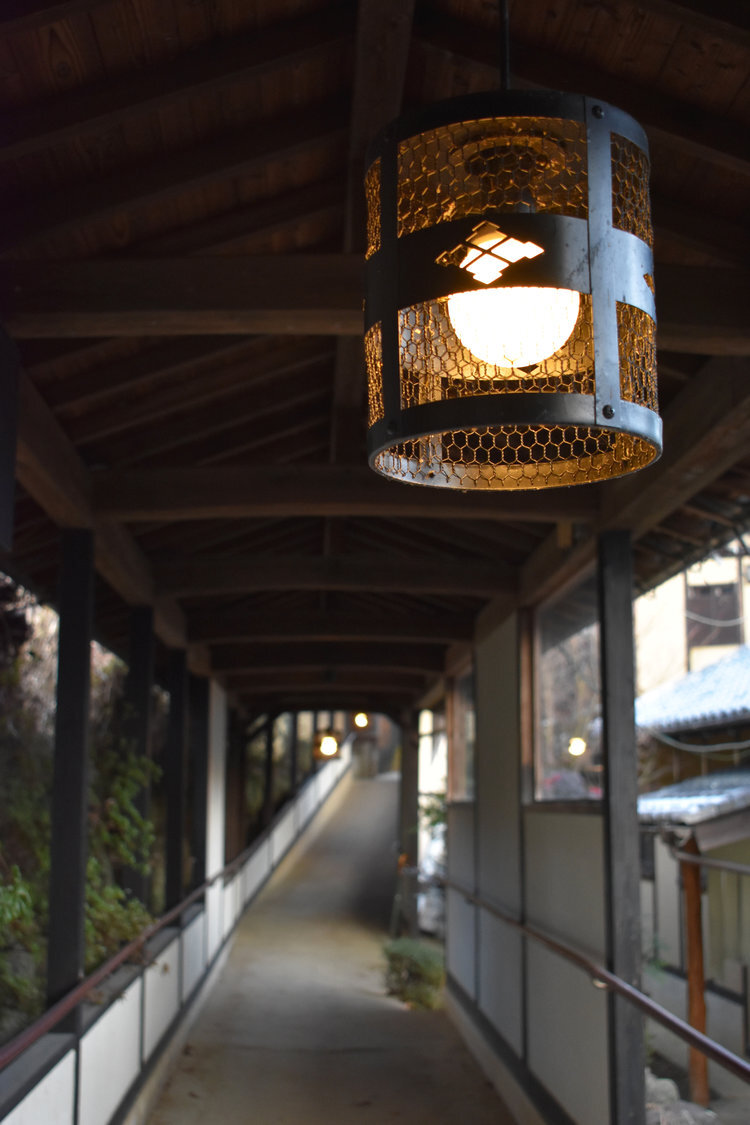
The dinner was one of my most memorable to date. There were so many plates of different delicacies. Crispy fried fish, red peppercorn on a few things that added a huge punch of flavor (I will be experimenting more with this!), sushi that came hidden in a ball of ice, nabe (soup that cooks at the table), and a array of other pickled vegetables, cured meats, cooked meats, tofus, and salads (my mouth is watering now missing the food in Japan!).




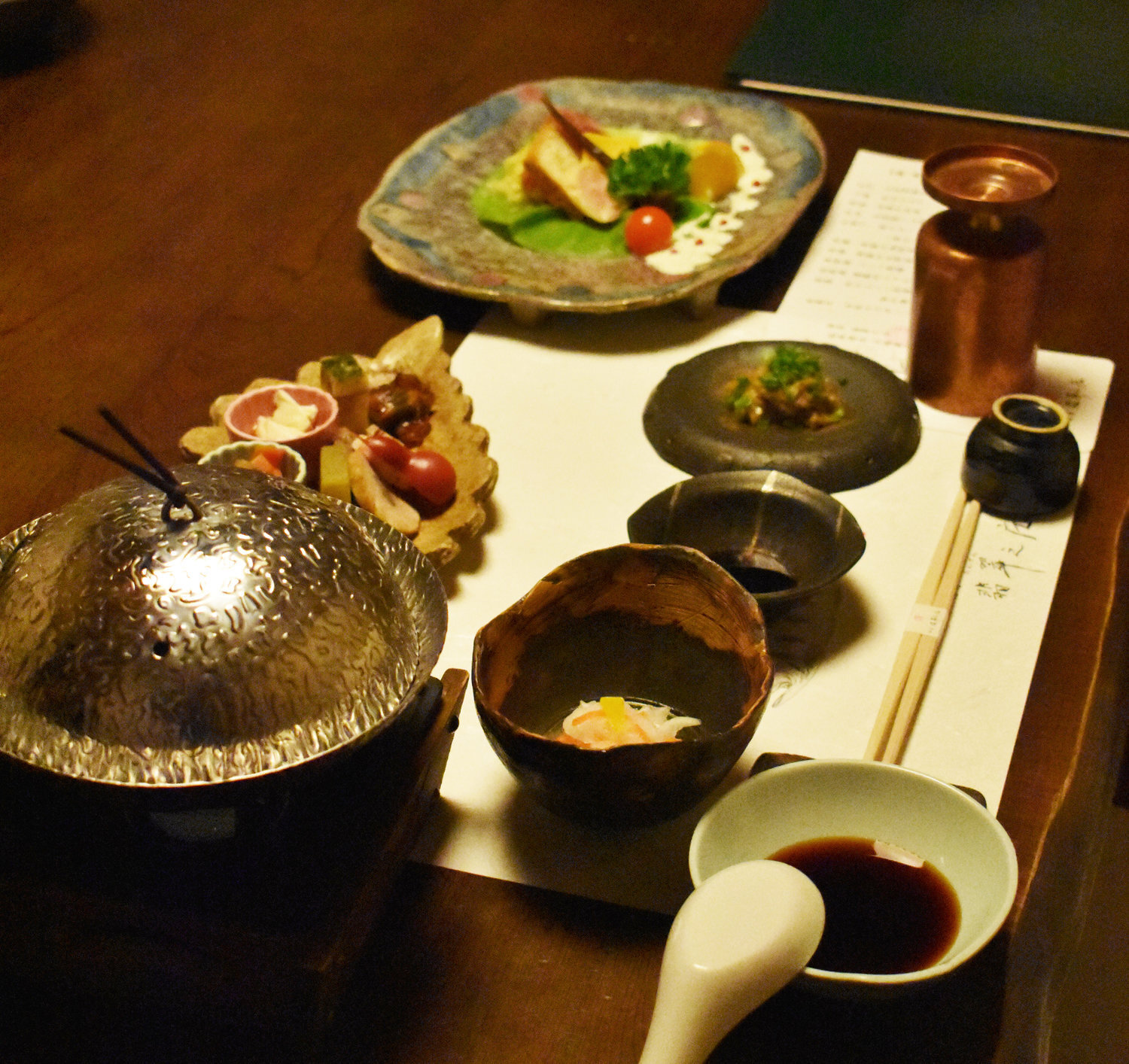


The next day we drove toward the east coast of Kyushu to a mountain famed for it’s loose monkeys. Our little one was ready to dive right in and play with them which took a lot of harnessing in!
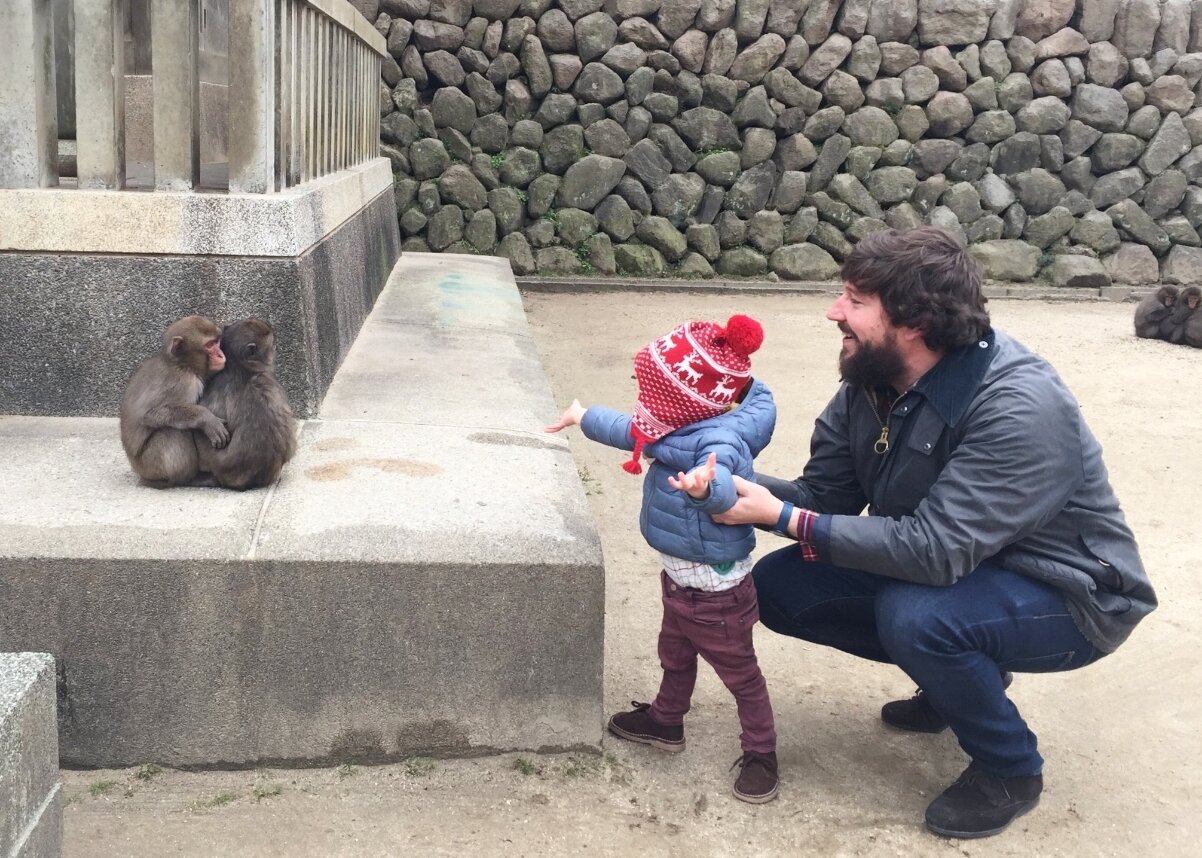
(2016, back-posting from a blog move)

To close out the summer this past year we headed over to Iki Island for one last weekend of sun and ocean. It's a two hour ferry ride from Fukuoka that takes you through Hakata Bay and past other islands along the way.

That captain with his aviators felt so Wes Anderson-y.




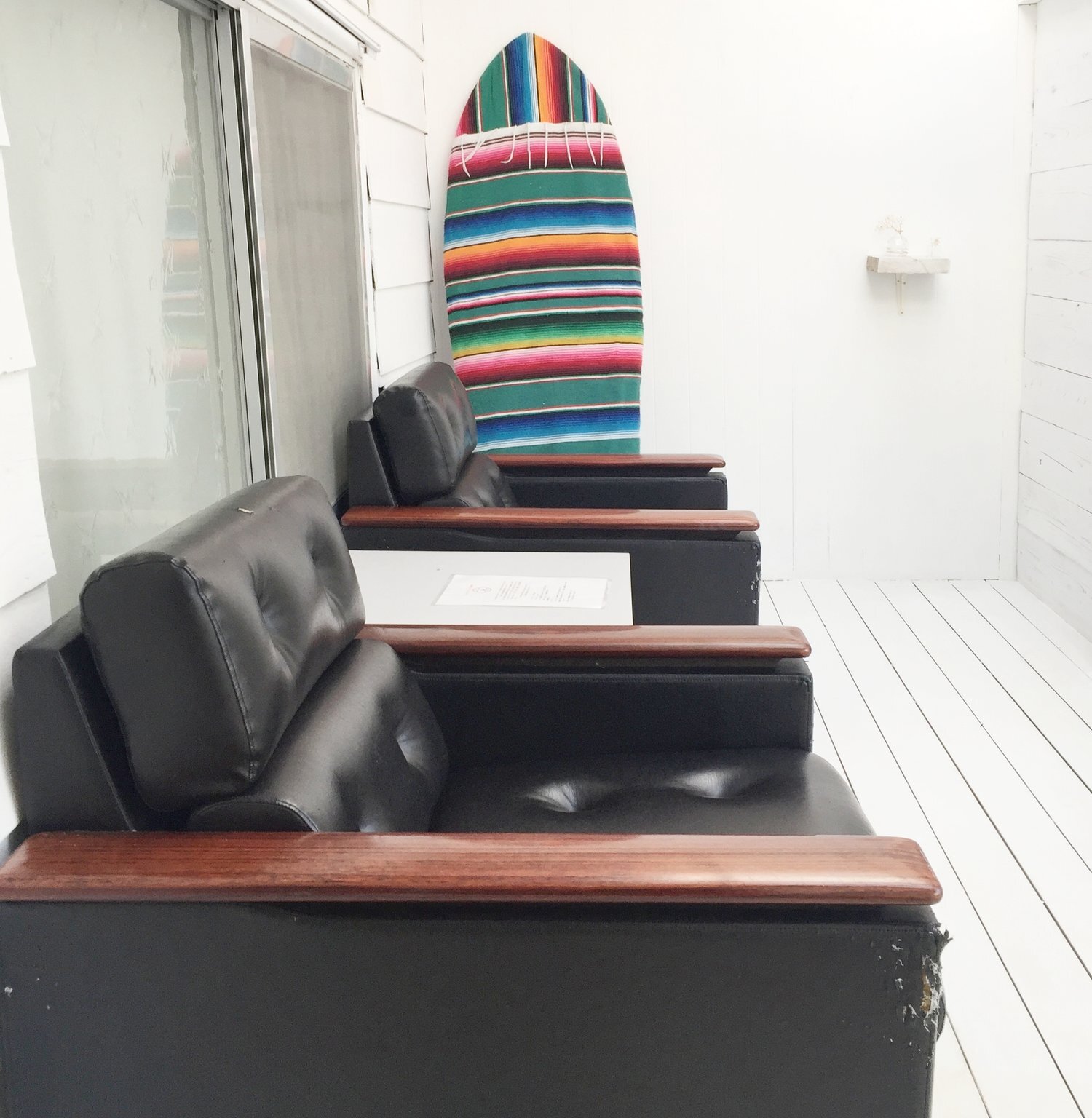
We stayed in Minatoya Guesthouse, recommended by a friend—a total treasure find. It is run by a young couple: she is a professional diver (ama, free-diver in a 2,000 year old tradition) and he is a professional angler. Dinner at the guesthouse is an exquisite spread of their daily catches. They are an exhaustive example of hospitality and kindness. One night the husband suggested crossing the street to his friend's bar with the other two guests (one who had a very interesting project with an ad agency to bring attention to these forgotten islands). I motioned for Pedro to go on and that I would stay with Peter, now sleeping. His wife didn't hesitate to offer to keep an eye on him for me while I went to enjoy time out as well.

The center dish was fresh-caught yellowtail, carpaccio style, they called it, with a mouth-watering vinaigrette on top.

Snails caught by the owner.
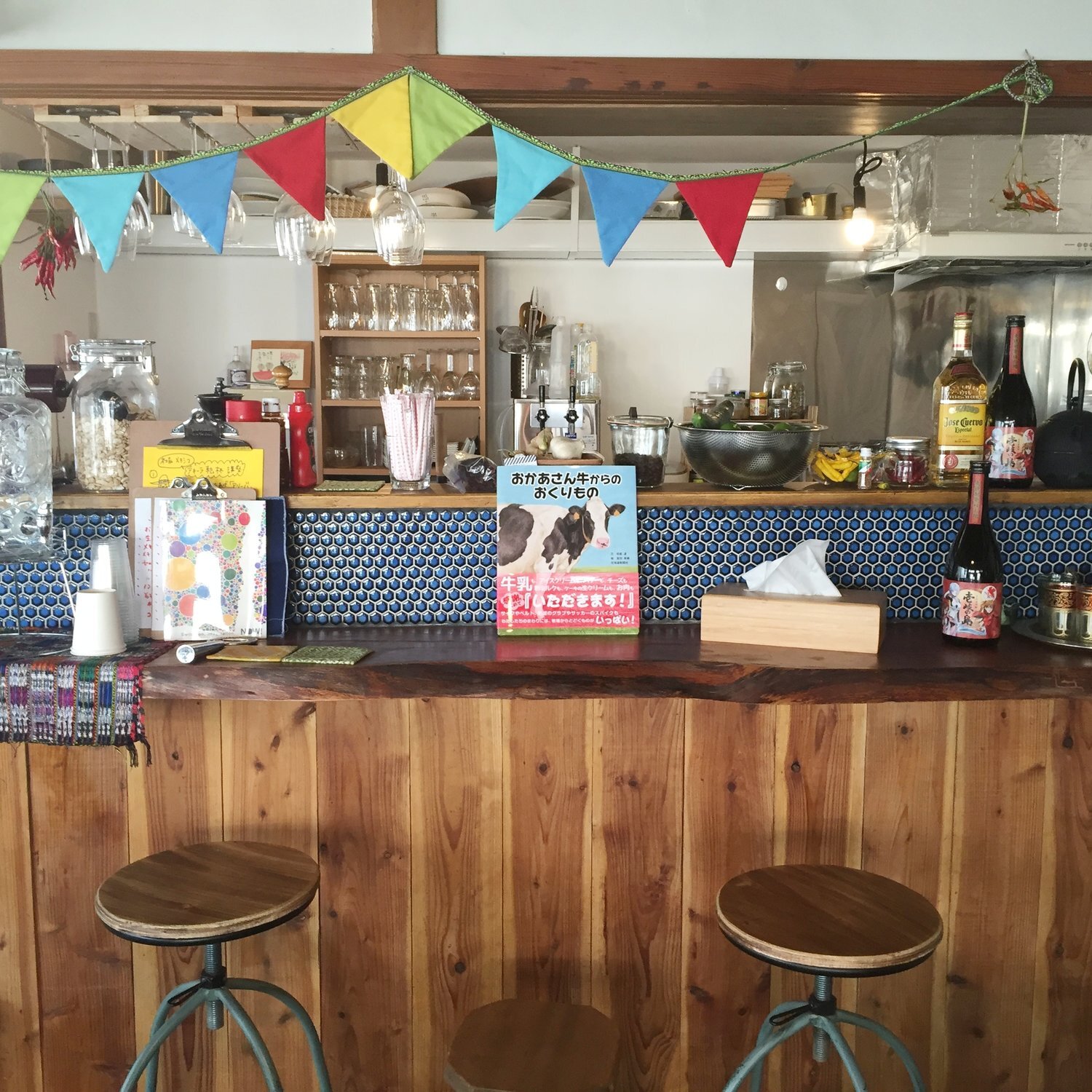
The island was much bigger than I expected. I was imagining a little outpost with just some sand and a few stores with basics. However, there were several different towns on the island all a good distance apart by car. The drives were nice, through green mountains and rice paddies. We beach hopped both days scouting out our favorite. We got lucky one afternoon when our toddler slept and we got two hours of glorious relaxation with the beach completely to ourselves.


During dinner the first night in the guesthouse we met some people at the table next to us who were mostly veterinarians (from the island) or studying to be one (visiting). The next morning one of the local ones popped his head in to ask if we wanted to visit some cattle farms on the island. It seemed like a random plan but we said yes and it actually turned out to be an interesting romp through some tucked away corners of the island. Iki is known for it's beef and on an island of 28,000 people, there are 800 cattle farms! Mostly micro ones, but still an impressive number. He took us around to three of them which was also a great way to meet some locals.





(2016, back-posting from a blog move)
We were entering Vigo from the beachside town where all of those summering were still sleeping on an August morning (side note: I once read that you know you’re wealthy if you use “summer” as a verb—not so in Spain; everyone there “summers” somewhere, be it beach or countryside). Elena, calm and collected as always, was driving as Maro, my sister-in-law, excitedly pointed out the window realizing we were passing a newly completed mural she hadn’t seen yet. It was spear-headed by a group she is part of, Proyecto Ewa, that started out as an effort to bring poetry to the streets, but that is now initiating urban art projects as well. We debated for about about two seconds: should we stop? Yes, no, yes! Elena: “Here? Are you serious?” Granted, we were in a fairly run-down industrial zone of the city with very little pedestrian life, where most people who don't live there ever "go." Yes, here!

We paused to enjoy it, talking about how we loved that the boy was holding a heart full of plants. How a home is where we cultivate hearts and how neighborhoods house homes (i.e. good neighborhoods=priority for cities). The laundry swaying amid the diptych made for a nice mix of art and quotidian life. We decided to meander from there to the city center looking for other murals she knew that about tucked around the city.

From my sorrow I see it rise
the cloth of the Atlantic
do I cry an ocean of tears
or follow the line into the depth?


From the lookout point where the view is the art.
Vigo is a city with new things hatching all the time. Its industrial past had its boom, and bust. But today it seems bursting with potential for more cultural industry. And a city with sea that breathes into its very existence makes for a great place to live.
Not a mural but still urban art—gotta love that typography.


As we arrived in the center, a lunch rendezvous with Cris and Marta (more sisters-in-law) was the perfect way to top off the morning. Taberna a Mina was a mom-and-pop bar for decades in the city, now renewed by photographer Janite Lafuente et. company—cozy and hip addition to the ancient casco vello's windy streets. As Maro always puts it, “it’s like being at home.” We devoured mussles, nécora crabs, cheese with cured dock, tortilla, and a few free rounds since they take good care of their customers. All washed down with house-made vermouth Spanish style: straight, over ice with an orange slice and olive.

Upon moving to Fukuoka, the city office provided us with a few packets of information, one of which was a garbage guide. Japanese garbage sorting is quite the chore, but the non-optional recycling set-up is good motivation (obligation). It explained that when throwing away sharp, broken objects, to wrap them in newspaper, therefore, caring for the safety of the person who will collect or move the bag next. There was a little speech bubble aside noting that this is practicing the Japanese spirit of wa: looking out for the good of the other.
It doesn’t take long to sense this spirit in Japan.
My husbands’ co-workers go above and beyond to accommodate us and facilitate our lives here. We have sensed the ripples of Japanese hospitality from day one when a group of his co-workers rented two cars for us and took us around the city for an entire day to buy all of the basics to make our house live-able—ALL day, on their Saturday off. They then proceeded to stay and help assemble when we said, “No, please, kudasai, go enjoy your night.”
We later experienced yet another moment—the kind that humbles you with gratitude and pushes you to evaluate the extent to which you consider others. While washing dishes at 10:30 the other night, I heard a gushing sound when I turned on the water. We ran outside to see if a pipe had burst, and our 80-year-old neighbor (who has already helped us in many ways despite the language barrier and made us lovely wooden craftsman pieces for our home) was already there tending to the issue. After he and my husband wrestled with pipes and knobs they finally got the water turned off. At 6:30 the next morning we heard the first bang of his hammer. And mind you, this is after two of my husband’s co-workers have been in touch with plumbers and the real estate agency on a Friday night at 11:00 p.m. Before we could call them in the morning to alert them that the issue was being fixed, at 7:30 a.m. a co-worker, the president of the real estate company, and a plumber—the co-worker with a large bottle of cold water and the real estate agent (8 months pregnant) with a balloon of congratulations for our baby.
So grateful for the spirit of wa.

(2016, back-posting from a blog move)
Almost every time I’ve headed through the city center for the last few weeks I have passed by this little shop building out its interior making me antsy for the day it would finally open so I can add another coffee shop to my list (nothing says getting some good research time in like a great coffee shop). And today was finally the day! Charming atmosphere, and even more delightful people.


And Coffee Roasters
Kumamoto, Japan
Update, I later made friends with the guys and designed this logo for them.

And this for his wife’s store’s New Year card:

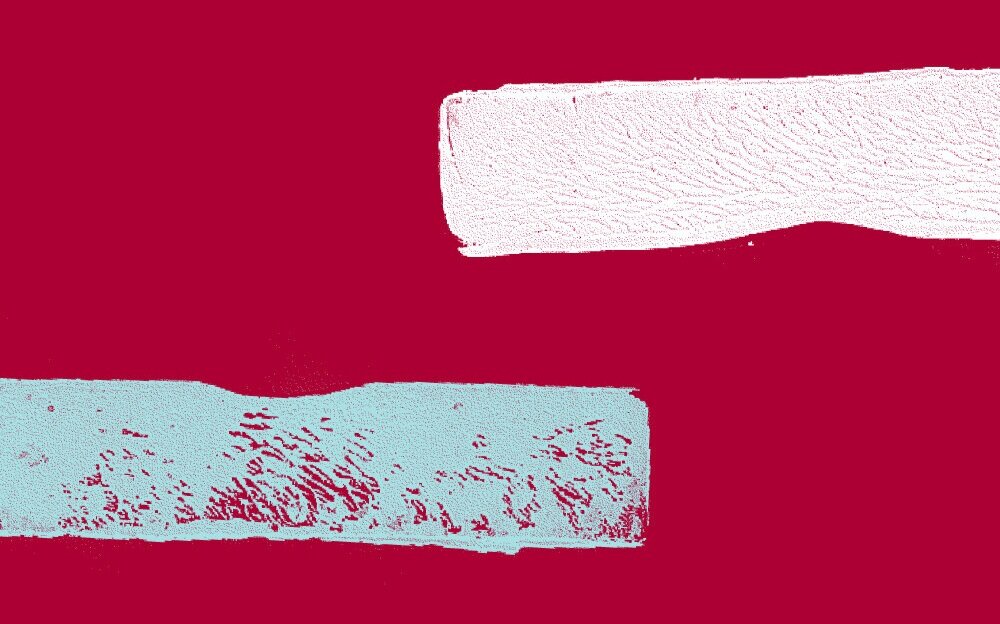
(August 2016, back-log posting in a blog move)
Bernard’s voice drifted through the humidity of a late spring night over an outdoor dinner table filled with young designers eager to experience how they may use design to make a difference. Many of my favorite moments I spent at PieLab in Greensboro, Alabama, were when dinner turned long—the food and drinks gone, but the conversations rolled on. This particular night, Bernard Cannife was eloquently sharing insights from his experience on the front lines of the changing design world: “Design is, for the first time, at the grown-up table.” For a young graduate, my idealism still mostly intact, the words were high-heart-rate inducing. How exhilarating to enter a field recently given an adult chair! But why now? What had changed? Who did we finally marry to graduate from the kiddie table? What new expectations are placed on us?
For most of history, design and art have been intrinsically linked. But within the last century, design has moved into a field now recognized on its own accord and is more widely understood by the public as separate from fine art. Design was usually considered to be a kind of service shop—one where designers merely fulfill client requests. But today, we’re seeing a shift. Designers, and creatives of all types, are being recognized as a major component of a strong economy, giving those in creative professions more leverage in mainstream culture. Creatives aren’t just bunking up in artist neighborhoods anymore—they now fill the shiny offices of Silicon Valley, Milan, and Tokyo. In his book, The Rise of the Creative Class, Richard Florida’s research shows that the Creative Class now makes up almost a third of the workforce and has taken “people who would once have been viewed as bizarre mavericks operating at the bohemian fringe and setting them at the very heart of the process of innovation and economic growth” (p. 6).
The shifting role of designers is the result of many social, cultural and technological changes. In the developed world, we have reached an era where our basic human needs are met by the wonders of mass production. In The Substance of Style, Virginia Postrel proposes that in such a culture, we turn to design for the next stride forward. We don’t simply want a refrigerator that works—heavens no! We want one that is stainless steel, has high gloss handles, french doors, an LED touch screen and is energy efficient. We expect every item we purchase to come with a variety of customizable options—to be super-designed. Now that “necessary” items are easy to find and affordable to purchase, there are more boutique versions of products appearing on shelves. In a recent issue of a lifestyle magazine, I came across a handmade Italian cafetera-style coffee maker featured for its craftsmanship and priced at over $5,000. Even coming from a coffee snob, there is no way a coffee maker that costs such an exorbitant amount is going to make coffee that tastes that much more superior to a cheaper option. This is a purchase made sheerly for design value, not functionality.
While artisanal is on the rise, it’s not the only factor behind this movement towards a more recognized culture of design. Many larger companies have also made good design a top priority—seating a designer across the table from the engineer, the R&D officer and the financial advisor. Target, America’s second-largest discount retailer, made design a key driver in elevating its brand. Their logo, branding, advertising, in-store way-finding and store-brand products all have a clean, sophisticated design that makes the shopping experience and brand recognition a step above its competitors’. Home store, IKEA, made modern design affordable to more people by offering modular options, therefore giving the user a large part in composition decisions. This cracked open a skilled, esoteric world of design and made aspects of it available to the population of non-designers. The DIY movement, inspired by the likes of other large brands, including Martha Stewart and HGTV, has contributed to consumers becoming more eager to understand design and intrigued with the invisible designer processes behind their products and experiences. Apple has played an enormous role in making consumers more design-aware. Its ruthless pursuit to perfect user experience has pushed the expectations of consumers time after time. The company makes few things, but makes them well. The touting of their values has instilled the language of design in consumers.
How to start chipping away at the impact of the world wide web on design? It is like showing up at Everest with a toothpick. Its entire experience and usability is based on design. It has surged the need for designers and given pedestrian users an incalculable awareness of how design affects them. It has built the platform for an entire market of websites, apps and the devices that support them. The development of internet-based technology has matured alongside the entrepreneurial and start-up-minded spirit of the young working generation. The new workforce has a firmer grasp than ever on the power of branding and excellence in design practices. With so much of our daily lives now involving some sort of a digital experience, often times the only way to make your company stand out from the others is to employ better design. Postrel observes that “in a crowded marketplace, aesthetics is often the only way to make a product stand out” (The Substance of Style, p. 2). Among the vast world of websites and apps, yours cannot simply “function” but must offer a more beautiful and intuitive experience.
Another factor worth mentioning is the impact of consumers being more aware of their ecological footprint. Even if the vast majority of consumers do not buy into “going green” alternatives, the once counter-cultural movement has procured a place in the mainstream and at times one of the main selling points of a product. Newly conscious of their consumption and discarding habits, consumers often sacrifice to pay a higher price point for goods that have more eco-friendly packaging or are of better quality, ensuring longevity and less waste.
In all of these transitions, design has migrated from being a peripheral service shop, to a partner in the whole development process of innovation, business, message-making and production. In the evolving modern workplace, collaboration is taking precedence and pulling many different “hats” to the table—to equally imagine, plan and develop our collective future. Many workplaces have adopted the brainstorming techniques long-used by designers. Employees from a vast number of non-design sectors have become more sensitive to elements of design, the process of design, and systematic thinking. The information flows both ways—designers are being served other responsibilities and processes of others at the adult table. Indeed it is the very marrying of design and technology that has brought design the largest share of its credibility, making it no longer just “art”. John Maeda made the point in a recent article on CNN.com that “the relevance of design is expanding far beyond visual aesthetics—to everything from tackling global issues such as climate change, to making sense of the overwhelming amounts of data that surrounds us.”
What do we offer to the adult conversation?
Bern’s further commentary that Alabama night etched words in my head that still linger: “Designers are market creators, global thinkers, and brokers of change.”
Among the huge technological implementations of the last decade, designers have been at the forefront of development in the hardware of these products, the aesthetic of the interface and the wireframes of the networks on which they run. Apps were never a “need” in peoples’ lives but now the majority of us probably cannot imagine living without a few staple ones on which we depend. While many of these products were not born in the mind of a designer, it took a designer to give them substance and bring them to life, helping create the new market. We cannot overlook that while we do not only make stuff pretty, it is still the designer who brings actual deliverables to the table—we have to know how to “make pretty” but also “make smart.” We intermediate between consumer voices and an actual understanding of what they want. This translation experience gives us skills as sense-makers, giving us one more asset to add to the table setting. Sense-making is our ability to interpret facts in meaningful ways. However, we must be careful to address real needs in improving the quality of life. “When real needs are neglected, and artificial ones everywhere stimulated into an avid hunger for novelty, sensation and status-appeal…It should not surprise [us] to find a thin and pretentious reality informing the design language of the world” (What is a Designer?, Norman Potter, p. 36).
In our hyper-connected world we are bombarded with information, but information must be deciphered. Designers are able take in the “big picture” while also considering local realities—to fluidly shift from talking about global movements to adjusting a vector’s slope two degrees. “Designers are the best synthesizers in the world. They make a synthesis of human needs, current conditions in an economy, in materials, in sustainability issues—and then what they do at the end, if they are good, is much more than the sum of its parts” (Paola Antonelli treats design as art, TED.com). Our cultural awareness allows us to trace trends, connect ideas, think broadly about the human experience and be more productively reflective. In the flattening world, as Thomas Friedman suggests, everything is so “integrated that there is no ‘out’ and no 'in’ anymore…every product and many services now are imagined, designed, marketed and built through global supply chains” (“Made in the World," NY Times, Jan. 29, 2012). Designers must be citizens of the world and simultaneously our local communities.
To be a broker of change is to mediate between the client and audience. We do this well because designers are empathetic and passionate about adding value to the world via our craft. We are problem solvers who can take our analytical methodologies and convert them to engaging channels of change. Rudy VanderLans goes even further to say that designers are not simply "facilitators, but…producers of messages, ideas and products. Not just hired hands, but initiators with personal stake in the projects they [create]” (Emigre 69: THE END, p. 55). Designers must realize their power as message creators to broker positive social change.
As designers find their place in the conversation at the adult table, we must make sure to listen to the others there, reflect, and then using our good manners, voice our unique perspective. Cheers to a new-found seat.
*Thanks to Megan Deal and Amber Griggs for feedback/edits.